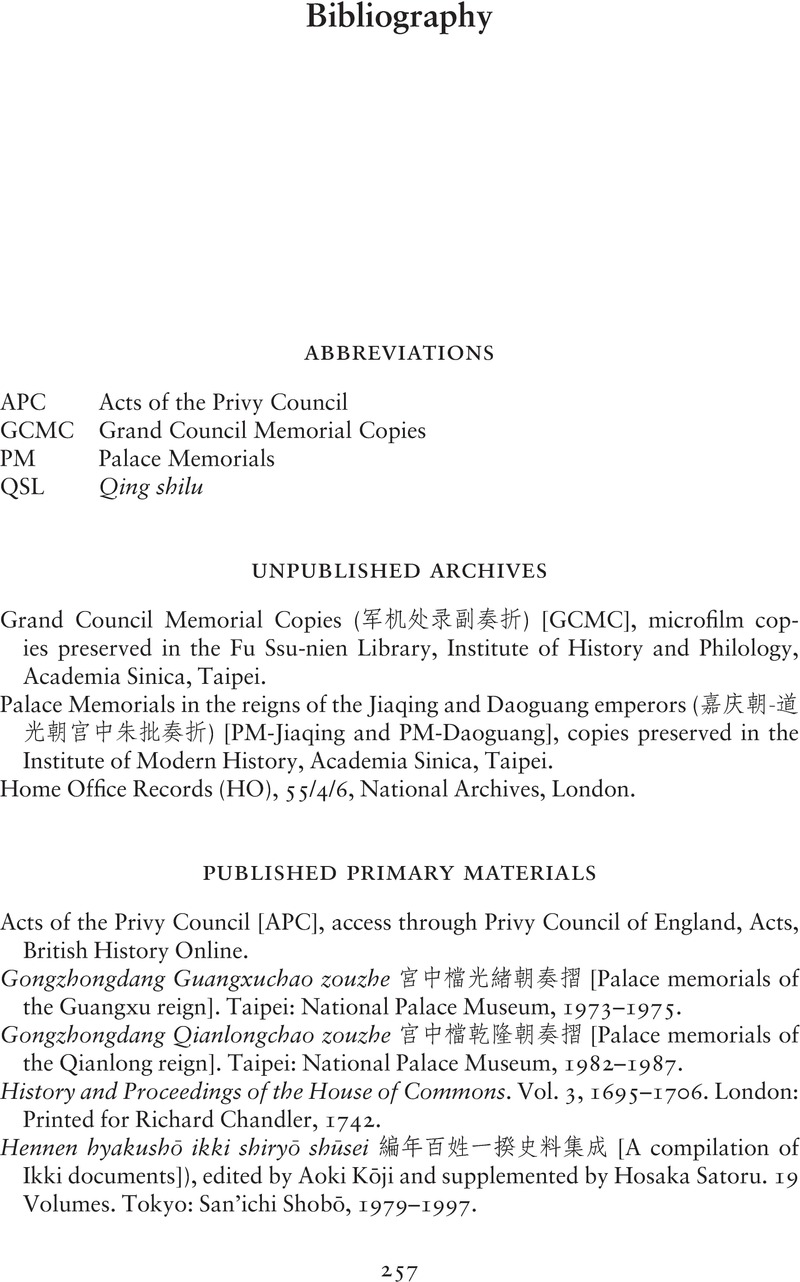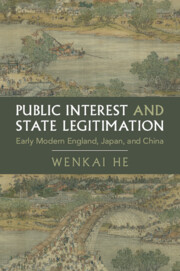Book contents
- Public Interest and State Legitimation
- Cambridge Studies in Historical Sociology
- Public Interest and State Legitimation
- Copyright page
- Dedication
- Contents
- Acknowledgments
- Introduction
- Part I Sources of Early Modern State Resilience
- Part II The Emergence of Modern Politics
- Bibliography
- Index
- References
Bibliography
Published online by Cambridge University Press: 17 November 2023
- Public Interest and State Legitimation
- Cambridge Studies in Historical Sociology
- Public Interest and State Legitimation
- Copyright page
- Dedication
- Contents
- Acknowledgments
- Introduction
- Part I Sources of Early Modern State Resilience
- Part II The Emergence of Modern Politics
- Bibliography
- Index
- References
Summary

- Type
- Chapter
- Information
- Public Interest and State LegitimationEarly Modern England, Japan, and China, pp. 257 - 298Publisher: Cambridge University PressPrint publication year: 2023



